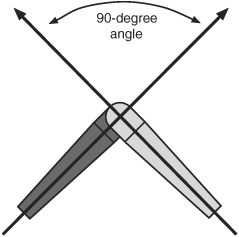XLR. A locking three-pin connector, originally developed by Cannon, often used to carry balanced audio signals. “XLR” comes from Cannon’s part designation: “X-series, Latch, Rubber.” For balanced audio, pin 1 of an XLR connector is always ground, while pin 2 or 3 can carry the “hot” (normal) signal (the current accepted standard is pin 2 hot), with the remaining pin carrying the “cold” (inverted) signal. (![]() See also balanced.)
See also balanced.)
XMF. Extensible Music File. A file specification adopted by the MMA (MIDI Manufacturers Association) that allows for playback of a single file within a computer or player. An XMF file wraps and contains all necessary MIDI information (in the form of an SMF—Standard MIDI File) along with DLS instrument files and WAV or other digital audio files. The XMF format is designed for easy transportability between platforms as well as fast downloads. There are two types: Type 0 and Type 1. The only difference is that MIDI information can be streamed using Type 0 XMF files.
XY stereo. A stereo microphone technique where two identical coincident cardioid microphones are angled at 90 degrees to one another (see Figure X.1). Because the mic capsules are placed very close together, they are phase coherent and offer good mono compatibility. Since most of the sound is actually picked up off-axis to the microphones, XY stereo miking does not result in an extremely wide stereo field, but it does produce a solid center image without pickup of too much room ambience. The audio quality of the stereo signal will depend on the off-axis response characteristics of the microphones used.

Figure X.1. For XY stereo, two identical cardioid microphones are placed at 90 degrees to one another.
